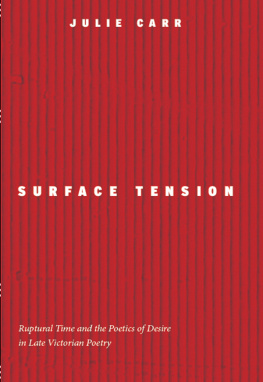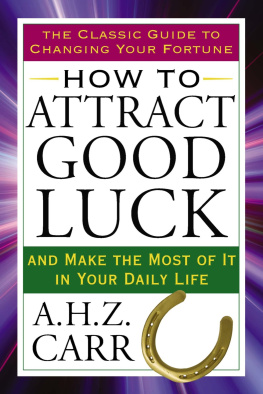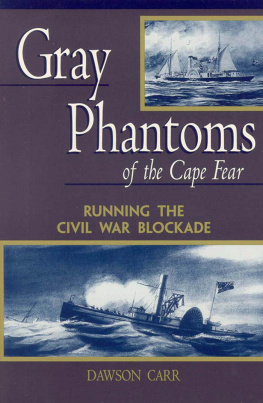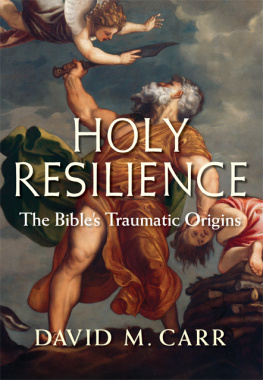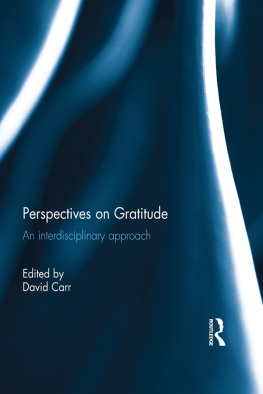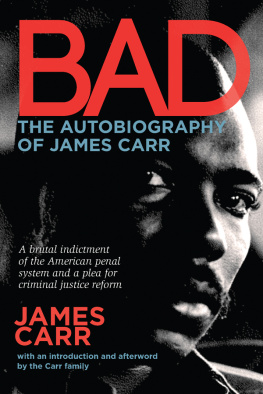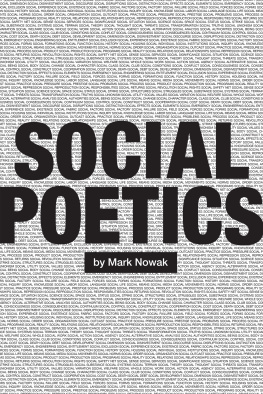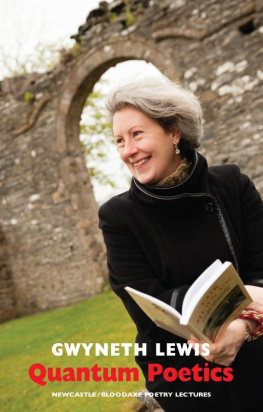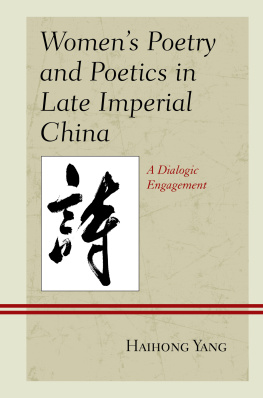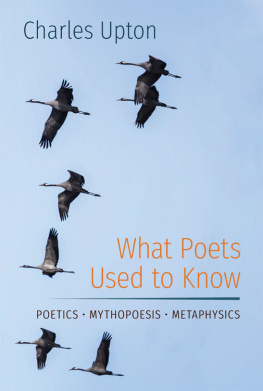Carr - Surface tension: ruptural time and the poetics of desire in late Victorian poetry
Here you can read online Carr - Surface tension: ruptural time and the poetics of desire in late Victorian poetry full text of the book (entire story) in english for free. Download pdf and epub, get meaning, cover and reviews about this ebook. City: Champaign;London, year: 2013, publisher: Columbia University Press;Dalkey Archive Press, genre: Romance novel. Description of the work, (preface) as well as reviews are available. Best literature library LitArk.com created for fans of good reading and offers a wide selection of genres:
Romance novel
Science fiction
Adventure
Detective
Science
History
Home and family
Prose
Art
Politics
Computer
Non-fiction
Religion
Business
Children
Humor
Choose a favorite category and find really read worthwhile books. Enjoy immersion in the world of imagination, feel the emotions of the characters or learn something new for yourself, make an fascinating discovery.
- Book:Surface tension: ruptural time and the poetics of desire in late Victorian poetry
- Author:
- Publisher:Columbia University Press;Dalkey Archive Press
- Genre:
- Year:2013
- City:Champaign;London
- Rating:3 / 5
- Favourites:Add to favourites
- Your mark:
- 60
- 1
- 2
- 3
- 4
- 5
Surface tension: ruptural time and the poetics of desire in late Victorian poetry: summary, description and annotation
We offer to read an annotation, description, summary or preface (depends on what the author of the book "Surface tension: ruptural time and the poetics of desire in late Victorian poetry" wrote himself). If you haven't found the necessary information about the book — write in the comments, we will try to find it.
Carr: author's other books
Who wrote Surface tension: ruptural time and the poetics of desire in late Victorian poetry? Find out the surname, the name of the author of the book and a list of all author's works by series.
Surface tension: ruptural time and the poetics of desire in late Victorian poetry — read online for free the complete book (whole text) full work
Below is the text of the book, divided by pages. System saving the place of the last page read, allows you to conveniently read the book "Surface tension: ruptural time and the poetics of desire in late Victorian poetry" online for free, without having to search again every time where you left off. Put a bookmark, and you can go to the page where you finished reading at any time.
Font size:
Interval:
Bookmark:

SURFACE TENSION
RUPTURAL TIME AND THE POETICS OF DESIRE
IN LATE VICTORIAN POETRY
JULIE CARR

But your eyes proclaim
That everything is surface. The surface is whats there
And nothing can exist except whats there.
J OHN A SHBERY , Self Portrait in a Convex Mirror
But the chaos of surfaces compels us to new states of happiness.
L ISA R OBERTSON, Occasional Work and 7 Walks from the
Office for Soft Architecture.
CONTENTS
In writing this book over many years, my sense of its audience has shifted. As it began as a dissertation, its earliest drafts were intended for a community of scholars, Victorian scholars specifically, and those interested in Victorian poetry even more. But this group, though one I admire from something of a distance, has not become my primary intellectual or creative community. As a poet and a publisher of poetry and innovative fiction and prose, I belong first and last to a community of contemporary writers, of poets. After such a long time of writing, reading, giving readings, teaching, publishing, and curating within this community, it would be impossible, I think, for me to write anything that was not in some sense for them, for the poets, which is to say, for my friends. In Americas literary landscape, in English and Creative Writing departments all over the country, there is often a divide between the scholars and the so-called creative writers, one that is generally crossed only by critics of contemporary literature. This book is mostly not about contemporary literature, and yet I hope it ventures across that divide anyway, speaking finally to both scholars and poets about a few figures from a hundred and fifty years ago in a way that might be useful, or at least stimulating. For the poets, I hope to bring those nineteenth-century writers in order to expand what we think of as the present. For the scholars, my hope, of course, is that the arguments here will feel interesting and convincing. But I also hope to reveal something about the ways that contemporary poets think about their work, and in so doing to draw a new line of connection between the Victorians and ourselves. This is not a book that mines the archive for new materials, nor is it a book that finds new figures to draw into our canon. However, in that this is a book by a poet, and one that encourages us to open rather than re-inscribe our sense of the period, of periodization in general, I hope it might, in perhaps revealing something new about contemporary poems and poets, help scholars of Victorian poetry to see the familiar in a different light.
For me, this has finally become a book about desirethe desire that reading carries. For mefor all writers, I assumeto read a poem of great complexity, mystery, and passion, like the poems discussed here, is to ignite the desire to write. This is also a book about the desire to convince someone, perhaps myself, of the importance, the value, the necessity of poems, of their ability to answer to crisis, to imagine change, to move toward a future. Finally, the writing of this book is about the desire for a life that continues to think through the language of poetry, which is to say, the language of motion and play, the language of question and suspension, the language of surface and depth.
I have many people to thank. First, as always, my parentsall four of themwhose own lives have been models of engaged passion, of ethically-informed creativity. I owe a huge thanks to Kent Puckett, an exemplary teacher and scholar who brings to his own writing and teaching an enormous amount of pleasure and passion, who gave to me the greatest gift, the gift of attention, and whose capacity for listening I am still trying to emulate. I am grateful also to Steven Goldsmith for his wide-reaching intellect and his patient and unyieldingly clear conversation, and for his friendship. Others at the University of California, BerkeleySharon Marcus, Catherine Gallagher, Lyn Hejinian, Kevis Goodman, and Charles Altieriall provided me with invaluable support and, as importantly, examples of what it might mean to be a scholar in a world that cares little for its scholars, what it might mean to maintain a faith in intellectual curiosity as a high value in and of itself. My colleagues at the University of Colorado: Sue Zemka, William Kuskin, Lori Emerson, and Patrick Greaney especially, have all been a part of this project, directly or indirectly, and I am grateful to all of them for their help, and also for their friendship. Christopher Nealon deserves a special thanks for modeling so beautifully the balancing act that is the life of a poet scholar, but also for inspiring me to write as clearly as I can and to care as deeply as I can for my material. Finally, I have other friends to thank who helped me in one way or another through this process: Jessica Fisher, Margaret Ronda, Linda Norton, Jennifer Pap, Noah Eli Gordon, John-Michael Rivera, Jeffrey Robinson, Andrew Zawacki, Andrew Joron, Brian Henry, K.J. Holmes, Rusty Morrison, Laynie Browne: all of these people have provided me with a kind of background of motivation because of my desire to speak with them, to have them hear me, and to hear them as well. What I would do, or who I would be, without these friendships, is impossible to imagine. So I use this opportunity to thank these friends for all of it.
Finally, I dedicated this book to Tim Roberts, for love.
On he flared ...
John Keats, The Fall of Hyperion
If a poem has a surface and a depththe one embellishing, ornamental, and attractive, the other meaningful, soulful, ideationalthere can be little debate about which is the principal part. The poems surface, its formal devices and linguistic play, is valuable for what it serves: its role is supportive, and therefore secondary. The poems depth, whether construed as idea, argument, emotional truth, or narrative, is by contrast valuable even when the surface is removed, even when the poem is translated into ordinary speech. But what happens when the pathway from surface to depth approaches impenetrability? What happens to the poems importance, its value, its force, when its decorative qualities begin to assert themselves over and into content, when the poems argument or message loses itself in the folds of ornament?
These are the questions of modern and postmodern poetics and might seem to have less purchase in a study of Victorian poetrya poetry that is commonly understood to be perhaps decorative, but primarily ideological, devotional, narrative, or dramatic, and not, as in the self-conscious works of the twentieth century, intensely focused on languages surfaces, on language as surface. And yet, from Tennysons highly wrought sonic experiments to Swinburnes metrically vigorous and syntactically complex poems, one finds in Victorian poetry a longing for language to move toward abstractionto move in the directions that the modernistsMallarm, Pound, Stein, and Zukofsky, for examplewould take it, toward the condition of music.
In the poets I examine, this interest in the surfaces of language is particularly intensified. Furthermore, many of the deep un-rests of the latter half of the nineteenth centurythe epistemological, political, and social tensions of the periodregister themselves in and as a debate about the status of the surface in poetics. As Victorian poets and theorists of poetry and artArthur Hallam, J. S. Mill, Elizabeth Barrett Browning, Matthew Arnold, John Ruskin, Walter Pater, D.G. Rossetti, Christina Rossetti, Algernon Swinburne, William Morris, and Gerard Manley Hopkinssought to define the social role of the poet and of poetry in their period, sought to understand or forge a relationship between poetry and social change, cultural criticism, revolutionary or conservative political positions, they participated in a long and ongoing debate about the social value of highly wrought aesthetic surfaces.
Next pageFont size:
Interval:
Bookmark:
Similar books «Surface tension: ruptural time and the poetics of desire in late Victorian poetry»
Look at similar books to Surface tension: ruptural time and the poetics of desire in late Victorian poetry. We have selected literature similar in name and meaning in the hope of providing readers with more options to find new, interesting, not yet read works.
Discussion, reviews of the book Surface tension: ruptural time and the poetics of desire in late Victorian poetry and just readers' own opinions. Leave your comments, write what you think about the work, its meaning or the main characters. Specify what exactly you liked and what you didn't like, and why you think so.

